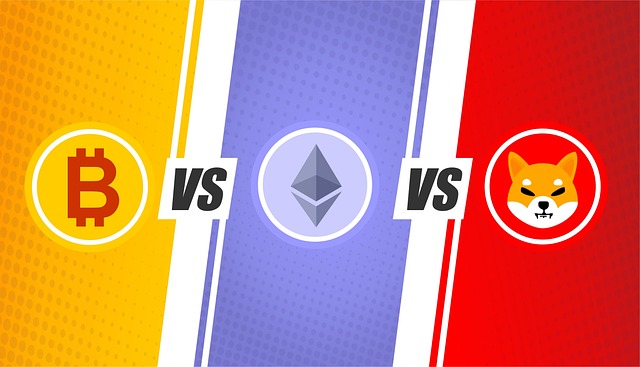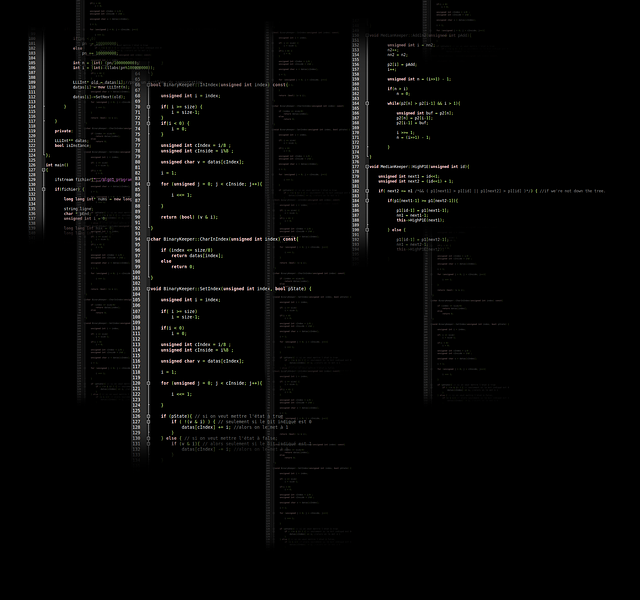Bybit vs Binance Trading Fees: Ultimate Comparison 2025
Author: Jameson Richman Expert
Published On: 2025-10-28
Prepared by Jameson Richman and our team of experts with over a decade of experience in cryptocurrency and digital asset analysis. Learn more about us.
Bybit vs Binance trading fees is a common search for traders who want to minimize costs and maximize returns. This article breaks down both platforms’ fee structures — spot, margin, futures/perpetuals, maker/taker splits, VIP tiers, token discounts, withdrawal costs, and hidden fees like spreads and slippage — and gives actionable examples and strategies to reduce your fee burden. You’ll find clear comparisons, sample calculations, and reliable resources so you can decide which exchange fits your trading style and volume.

Why fees matter: more than percentages
Trading fees directly reduce your returns. While a 0.05% difference per trade sounds small, it compounds quickly for active traders, high-leverage traders, or algorithmic strategies. Fees influence:
- Net profit on each trade (especially scalping and high-frequency strategies)
- Break-even win rate for leveraged trades
- Choice of order types (market vs limit)
- Where you route large OTC or institutional orders
High-level comparison: Bybit vs Binance
Both Bybit and Binance are major global exchanges with broad product offerings, including spot markets, margin, USDT- and coin-margined futures, options, and liquidity programs. Each platform features tiered fee schedules that reward higher volume users and native-token holders. Key high-level points:
- Binance is known for deep liquidity, a wide asset list, and the BNB discount program. It typically offers very competitive fees at all tiers, plus frequent promotions.
- Bybit competes strongly on derivatives and has competitive maker rebates and tiered structures designed for market makers and high-volume users.
Understanding maker vs taker fees
Before diving into platform differences, understand maker and taker:
- Maker fee: Charged when you add liquidity (limit orders that sit on the order book). Makers often get lower fees or even rebates.
- Taker fee: Charged when you remove liquidity (market orders or limit orders that immediately execute). Taker fees are typically higher.
For active traders who can consistently place limit orders, maker rebates can significantly lower effective trading costs.

Where to check live fees (always verify)
Fee schedules change. Always confirm on the official pages:
- Binance fee schedule (official)
- Bybit fee page (official)
- Background on cryptocurrency exchanges (Wikipedia)
Spot trading fees: practical comparison
Spot trading fees are generally simpler than derivatives. Both exchanges commonly use a fee model where base maker/taker fees can be reduced by:
- Trading volume over a 30-day window (VIP tiers)
- Holding or using the exchange’s native token (BNB on Binance; Bybit has its own mechanisms)
- Participating in promotions or rebate programs
Sample real-world considerations:
- If you’re a low-volume retail spot trader, the beginner default fee on either platform will be your baseline — often around 0.075%–0.10% per side before discounts (verify on official pages).
- If you use token discounts (e.g., BNB on Binance), you can often reduce spot fees by a fixed percentage.
Derivatives and futures fees (where differences matter)
Derivatives often have more attractive maker rebates and different taker fees. For perpetual futures, exchanges try to incentivize liquidity provision by offering negative maker fees (i.e., rebates) for certain tiers.
Key differences to watch:
- Default maker/taker splits and whether maker fees include rebates
- Tier thresholds (how much volume is needed to get the best rates)
- Funding rates are separate from trading fees but affect overall carrying cost
Example: how a fee structure shapes returns
Assume a trader opens and closes a leveraged position in a perpetual contract (simplified):
- Trade size: $100,000
- Leverage: 10x
- Round-trip taker cost: 0.04% per side = 0.08% total
Fee cost = $100,000 * 0.0008 = $80 per round trip. If an exchange offers a maker rebate that reduces round-trip cost to $10, the difference rapidly accumulates over many trades.

Withdrawal and deposit fees
Deposit fees are typically zero for crypto deposits but withdrawal fees vary by coin and can change with network conditions. Withdrawal fees are not the same as trading fees but directly impact total cost. Compare both:
- Binance: withdrawal fees are network-dependent (users can choose networks like ERC-20, BEP20, etc.) — choose a lower-cost network when possible.
- Bybit: similar model; some assets may have higher withdrawal costs due to smaller liquidity or network fees.
Always check the withdrawal fee page before transferring funds: large transfers may be cheaper per unit on one network vs another.
Hidden costs: spread, slippage, liquidity
Transaction cost = explicit fees + implicit costs. Implicit costs include:
- Spread: The difference between the best bid and ask. A wider spread increases cost even if explicit fees are low.
- Slippage: When your order moves the market. Market orders on low-liquidity pairs can be costly.
- Latency and execution quality: Faster matching and deeper order books reduce slippage risk.
Binance often has deeper liquidity on major pairs, potentially reducing spread and slippage. Bybit is strong on derivatives with competitive order books on many perpetual markets.
VIP tiers and volume discounts — how to tier up
Both platforms use tiered fee structures. Typical pattern:
- Tier based on 30-day trading volume (USD equivalent) or asset holdings
- Higher tiers = lower maker/taker fees, better withdrawal conditions, higher API rate limits
Actionable tip: If you plan to trade >$50k-$100k monthly, model VIP tiers to see if moving volumes to one exchange reduces fees enough to justify consolidating there.

Using native tokens for discounts
Binance lets you pay fees with BNB for a discount. This is simple and often gives an immediate percentage reduction on trading fees. Bybit also runs native-token-based promotions and VIP reward mechanisms — check current offers on their rewards pages.
Promotions, rebates, and maker programs
Exchanges run frequent promotions and liquidity rebates:
- Market maker programs can pay rebates for consistent liquidity provision
- Referral programs, trading competitions, and temporary fee-waivers can reduce costs short-term
Check exchange announcements to capitalize on temporary discounts or trading campaigns.
Practical fee comparison strategy
Instead of relying on headline numbers, follow these steps to compare Bybit vs Binance fees for your trading style:
- Identify the products you use: spot, margin, USDT perpetuals, coin-margined futures, options.
- Check the official fee pages (links above) for default maker/taker rates and VIP tiers.
- Calculate your 30-day notional volume and map to tier levels on both exchanges.
- Factor in token discounts (BNB or Bybit incentives) and likely withdrawal costs for your assets.
- Estimate implicit costs: average spread and slippage per trade on the specific pairs you trade.
- Run a sample P&L model for a typical trade frequency (e.g., 50 round trips per month) and compare net profits after fees.
Sample fee calculation (illustrative)
This is an illustrative calculation — verify numbers on official fee pages before trading.
- Assume a retail trader does 100 round-trip spot trades per month, each trade size $1,000.
- Default taker fee = 0.10% and maker = 0.08% (example). If 60% are taker and 40% are maker:
Average per-trade fee = 0.6 * 0.10% + 0.4 * 0.08% = 0.092% per side. Round-trip cost = 0.184%.
Monthly cost = 100 trades * $1,000 * 0.00184 = $184.
If an exchange reduces average fee to 0.07% per side with discounts, cost = $140. Over a year, that difference compounds and can fund better tools or strategy development.

Which exchange suits which trader?
General guidance:
- Low-frequency spot investors: Choose the exchange with the best withdrawal network options and lowest withdrawal fees for your coins. Both Binance and Bybit are viable; Binance’s broader fiat gateway and BNB discounts are attractive.
- Active spot traders/scalpers: Favor the exchange with the tightest spreads and lowest taker fees for your specific pairs. Test execution on demo or small live trades.
- Derivatives traders (perpetuals): Consider maker rebates and funding environment. Bybit is competitive on derivatives; Binance’s deep liquidity is also a major plus.
- Institutional or high-volume traders: Focus on VIP tiers, API stability, and bilateral OTC pricing — negotiate institutional terms if possible.
Minimizing fees: practical tips
- Use limit orders instead of market orders to qualify for maker fees or rebates.
- Hold and use native tokens (BNB on Binance) when it’s cost-effective.
- Consolidate volumes to hit higher VIP tiers if you trade across multiple products.
- Choose lower-cost withdrawal networks (e.g., BEP-20 instead of ERC-20 where appropriate and secure).
- Monitor exchange promotions and referral incentives.
- Use OTC desks for very large trades to reduce market impact and spreads.
Regulatory and risk considerations
Fees are only one factor. Regulatory access, KYC requirements, jurisdictional restrictions, and asset listings also matter. If an exchange restricts services in your country or has liquidity limits for certain assets, that impacts overall cost and operational risk. Always review terms of service and regional availability.

Tools and resources to make the comparison easy
Use these resources to create reliable, up-to-date comparisons:
- Official exchange fee pages (linked above)
- Order book depth and spread checks in real time (via exchange UI or API)
- Fee calculator spreadsheets (build or use community tools)
- Backtesting your strategy including explicit and implicit costs
Further reading and advanced approaches
Want to go deeper into fee-aware trading strategies and infrastructure? These guides and reviews can help:
- Effective Finance Trading Programme — strategies for maximum profitability — learn robust trading practices that reduce churn and unnecessary fees.
- XRP trendline breakout analysis — example of trade planning that emphasizes entry/exit discipline to minimize slippage.
- Crypto AI trading bot review 2025 — using automation to place limit orders intelligently and reduce taker fees.
Exchange links and where to sign up
If you want to test or open accounts, these official sign-up links (affiliate/referral) are provided:
- Register on Binance
- Register on Bybit
- Register on MEXC — alternate exchange option
- Register on Bitget — another derivatives-focused option

Checklist: which exchange to pick for your needs
Use this quick checklist to make a decision:
- Which product do I trade most (spot, futures, options)?
- What is my expected 30-day notional volume?
- Do I prefer maker rebates or simpler fee discounts (native token)?
- How important is liquidity for my trading pairs?
- What are the withdrawal and fiat on/off ramp costs for my region?
- Can I benefit from promotions, VIP tiers, or referral bonuses?
Final comparison summary
There is no one-size-fits-all winner in the Bybit vs Binance trading fees debate. Binance often wins on raw liquidity, broad fiat rails, and straightforward BNB discounts, making it attractive for many spot and derivatives traders. Bybit competes strongly on derivatives fee programs and maker rebates, which can be better for high-frequency or market-making strategies.
The right choice depends on your trading frequency, preferred products, and the pairs you trade. The best approach is to model your expected trades with current fee schedules, include withdrawal costs and implicit spreads, and run a small live test to verify execution quality.
Actionable next steps
- Open accounts on both platforms (links above) and verify KYC so you can compare live spreads and fees.
- Check the official fee pages and map your 30-day volumes to VIP tiers.
- Run a P&L simulation for a representative month including fees, funding (for derivatives), slippage, and withdrawals.
- Use limit orders and native-token discounts to minimize fees where possible.

Closing note
Fees are an important component of trading performance but not the only one. Execution speed, liquidity, product availability, security, and regulatory comfort are equally crucial. Use the comparison steps above, validate with the official fee pages, and apply the fee-reduction tactics relevant to your trading style.
For strategy optimization and long-term profitability techniques, see the Effective Finance Trading Programme linked above. If you trade XRP or use automated strategies, the linked XRP analysis and Crypto AI trading bot review provide practical, fee-aware guidance and automation ideas.